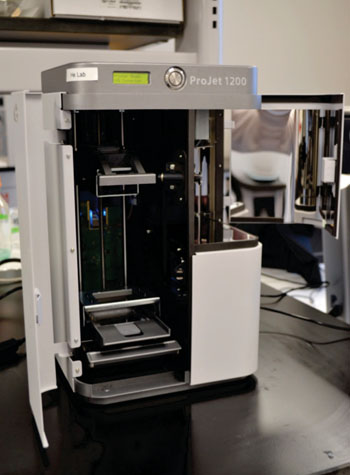3D Printed Diagnostic Device Rapidly Detects Anemia
By LabMedica International staff writers
Posted on 07 Mar 2016
A new biomedical device has been developed using 3D printers to create a low cost, point-of-care device that can quickly detect anemia, a condition in which the blood does not have enough healthy red blood cells to transport oxygen to the body's organs. Posted on 07 Mar 2016
Point-of-care devices give the user fast, easy-to-understand results from a test performed outside of a laboratory, such as a blood glucose test or pregnancy test and identifying a blood disorder may be as easy as running a blood sample from a finger prick under a smartphone.

Image: The Projet 1200 3D printer was able to easily produce and refine the device from environmentally friendly materials to make low cost, point-of-care devices that quickly detect anemia from a drop of blood (Photo courtesy of Kansas State University).
Scientists at Kansas State University (Olathe, KS, USA) made the device with a Projet 1200 3D printer (3DSystems; Rock Hill, SC, USA) and designed it to detect anemia for individuals who have limited access to health care, such as those living in developing countries. Anemia affects two billion people worldwide, including more than half of preschool children and pregnant women in developing countries and at least 30% of children and women in some industrialized nations.
The device consists of 3D printed clear plastic slides containing microfluidics that attach to a smartphone. The user adds a drop of their blood to a slide, which is used for a color scale-based test. The test results are produced in less than 60 seconds and can be read using a smartphone. A companion app is being developed with Steve Warren, PhD, an associate professor in electrical and computer engineering at Kansas State University, which could manage data from the blood sample and even send the results to a doctor.
Kim Plevniak, a master's student in biological and agricultural engineering, who worked on the device, said, “Anemia is a very prevalent condition in developing countries even though it is easily treated with iron supplements or vitamins and can be prevented with a healthy diet. Often in these developing countries people will have much easier access to smartphones than they will to doctors and trained medical professionals.”
Related Links:
Kansas State University
3Dsystems














